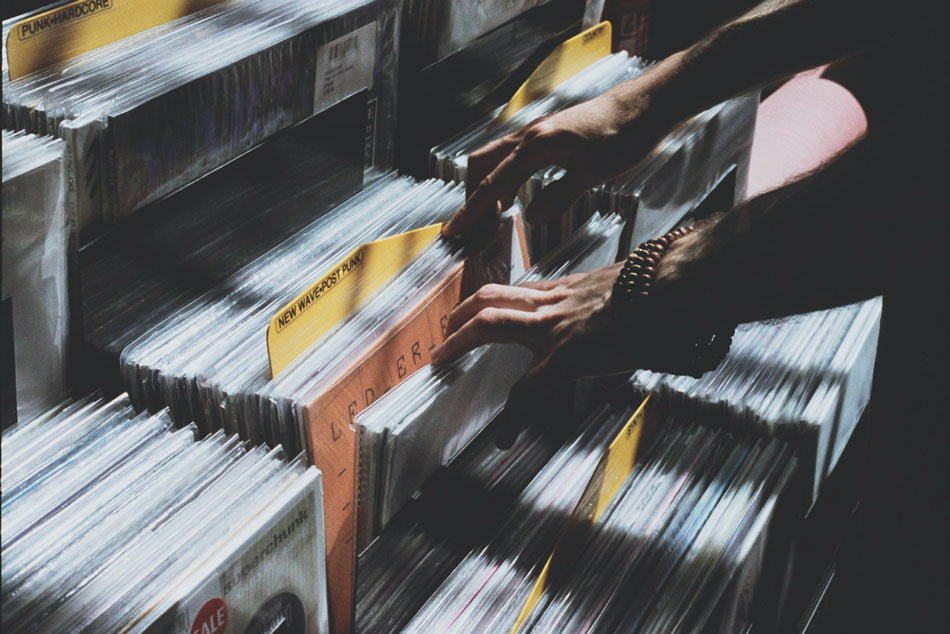
History of Vinyl Records
Share
Vinyl records have been a staple aspect of our society for the past century. Our great-grandparents were the first to live and love these incredible pieces of technology. And at the time, they thought that was as far as technology was going to go. Luckily for us in the 21st century, technology has progressed just a little bit. But even so, we still go back to these vinyl discs. Why? What makes these simple music makers stars even today? Well, because of history. Things tell stories. Records have vinyl history too. And these stories go back quite a bit. Keep reading as Big Fudge discovers and encounters the fascinating history of vinyl records.
Invention:
The first ever recorded record was in 1877 by Thomas Edison. At the time, he called it a phonograph record and it is very different to what we think of today. The record didn’t start out as vinyl, nor did it even start out as a record. Edison actually first recorded sound on tinfoil that was wrapped around a metal cylinder tube. He later transitioned to a hollow wax cylinder that proved much more effective.

In 1889, a German-born American inventor named Emile Berliner developed a laterally-cut disc record. He called this the “gramophone.” In the early days of the gramophone, it was only marketed in Europe and didn’t do particularly well - this was a rough start in the history of vinyl records. Because the disc itself was so small and needed to be played on a hand-crank machine, these gramophones were mostly used as toys. Eventually, Berliner and his associate, Eldridge R. Johnson, created larger, better quality records. In 1901, the two inventors joined forces to create the Victor Talking Machine Company in Camden, New Jersey. Berliner’s side of the company moved to Montreal, where you can still visit the museum today to learn more about vinyl history.
By 1903, 12-inch records were the norm. These discs could play music up to three to four minutes long. In 1909, Thomas Edison manufactured Blue Amberol Records, which was made of plastic, making them much more durable and long-lasting. By 1919 the history of vinyl records hit a turning point: all patents and copyrights had basically expired, which means these records could be mass produced by many different companies worldwide.
78 vs. 45 vs. 33 RPM:
RPM means rotations per minute, literally referring to how many times the disc will spin in one minute. Back when records were played on hand cranked machine, the average turn per minute was around 78, so that became the standard speed. 78s produced those three to four minute sides. Similarly, 45s usually only had one song per side, but they were physically smaller than the 78s. Size became the biggest factor in production: smaller discs were cheaper to make. Producers hit the jackpot when they realized that they could make even smaller discs and maintain good audio quality. Thus became the 33s. This is when the history of vinyl records really changed. 33’s can play about twenty-two minutes per side, which usually makes up a full album. New records that are bought today are generally 33s for this reason.
Resurgence and Present Day:

Today, it seems like with every passing hour the old is becoming new again. Vintage is all the rage. From retro clothing to repurposed furniture, if something is old, it’s almost automatically considered cool.
Vinyl records and their history are no exception. Adults in their 20s have taken to records as a sort of cult following. Thrift and antique stores are seeing an influx of young people on the hunt for an old, spinning treasure. And in these cases, the older the better. Vinyl history is the thing to capture.
However, old records are not the only ones selling. You’ll find a myriad of both old and new collections at vinyl record shops. What’s crucial for both is maintaining their sound with proper love and care.
Shop Vinyl Record Cleaning Supplies & Storage Boxes at Big Fudge
Whether you are looking for items for cleaning or tips on starting a collection, Big Fudge has you covered. Check out our blog or send us a message!


